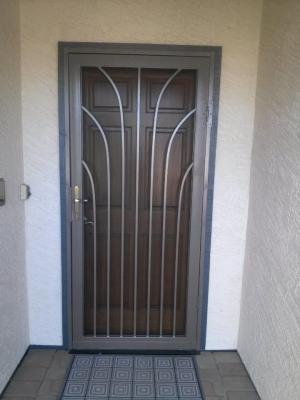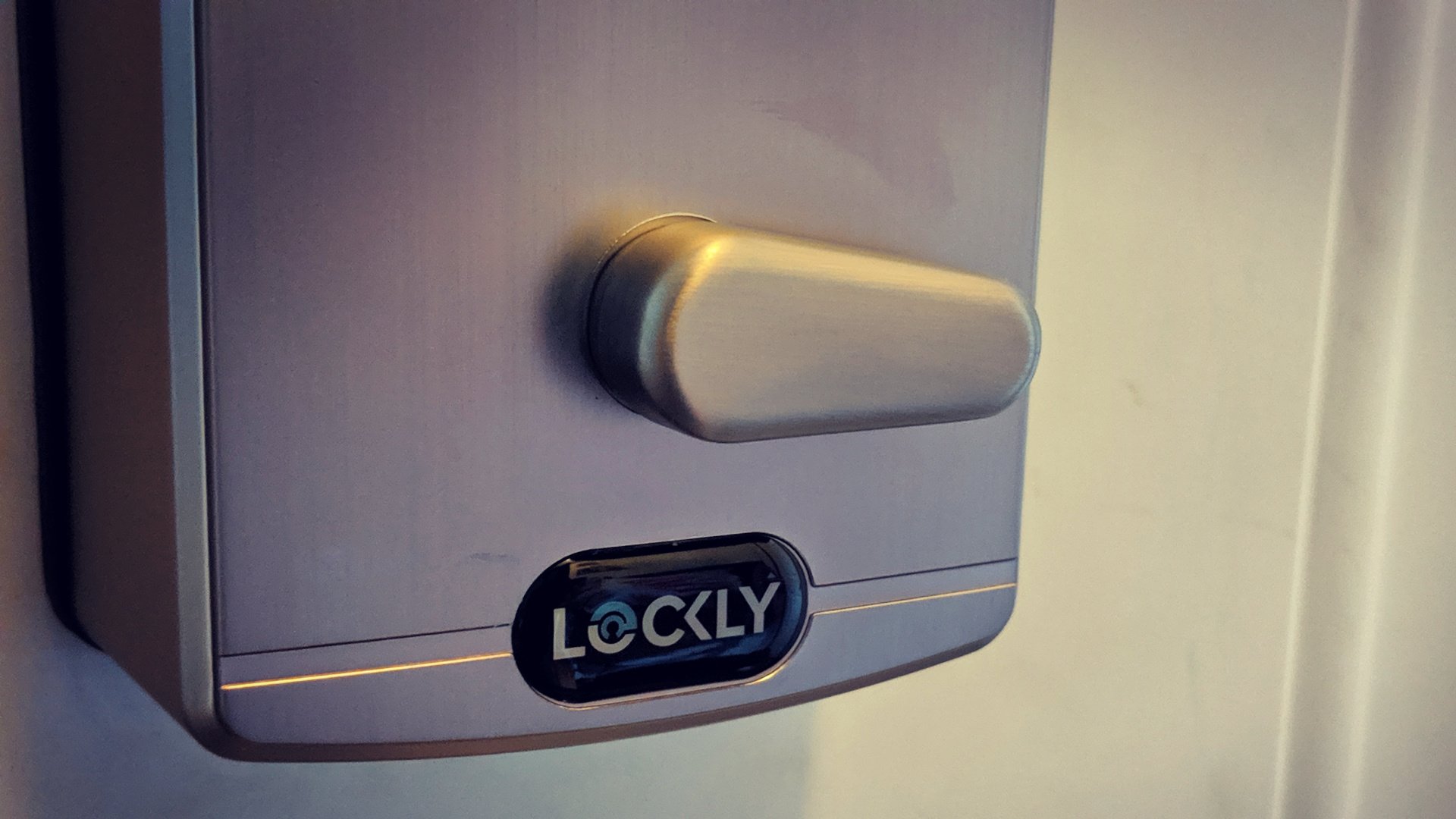
Vivint smart locks connect via Z-wave with your home's Wi-Fi network, and you can control them from your smartphone. Your phone can securely connect to your home's WiFi network. You can unlock and lock your door from anywhere. You can create up to thirty unique access codes. You can also eliminate duplicate keys by using this tool.
Vivint smart lock uses Zwave connection
The Vivint smart lock uses a Zwave connection to communicate with other compatible devices. This connection is strong and can go through walls. It operates on a Zwave network by default, but you can add devices to it if needed. Adding a Vivint smart lock to your home is a simple process, and can be done in a few minutes.
To use the Vivint smart lock, download the Vivint app on your smartphone and install the software. This software is free and allows to create a unique key as well as set an expiration time. You can also activate the auto-lock function. The auto-lock feature must be activated via Vivint's mobile app.

It connects to the WiFi network at your home
Smart locks are an excellent option for homeowners who want technology to help protect their home. A smart lock will protect your home against intruders and alert you to possible burglaries. A smart lock can protect your home and allow you to inspect it from the comfort of your sofa.
Vivint smart locks connect to your WiFi network, so you get instant notifications when someone enters or leaves the house. These notifications are great and useful. However, you shouldn't allow them to be activated when you're not there. This could lead to false alarms.
You can lock and unlock your doors using your smartphone
Vivint smart locks are a convenient way for you to lock and unlock doors without having to use your keys. You will be notified when someone enters or leaves your home so that you are able to ensure safety. Vivint has an app for smartphones that allows you check on the status your doors.
The wireless network connects the keypad and door locks. The wireless network allows unauthorized users to gain access and modify the settings. This can make your home vulnerable. Smart locks with the most advanced verification features require fingerprints, longer passcodes, facial recognition, and more complex passwords. This decreases hacker risk. These systems should be avoided. Make sure you have two-factor authentication.

It is well protected against hackers
A Vivint smart lock is a secure option for homeowners who are concerned about the privacy of their home. It uses an advanced encryption algorithm that prevents outsiders hacking into their device. It also comes with a professional monitoring centre to ensure your property is safe. Vivint security systems also use a password to protect against unauthorized access. The password must be unique and should be kept current.
If you don't want your family and friends to have access to your smart lock, you should change the password to protect your account. All devices that can access your account should be signed out. If you suspect someone has tampered with your password, you can call Vivint customer support to help you set a new one. It is also a good idea to change the default settings of your router.
FAQ
What is the best home surveillance camera?
Home security systems with cameras are a great way to protect your family. These systems are very easy to use, and provide many benefits for homeowners and renters. They allow you to monitor your home remotely from any smartphone, tablet, laptop, or other mobile device.
Who is the best company for home security monitoring?
ADT is the best home security company. ADT provides 24/7 monitoring services at an affordable rate. The customer support team is available 24/7 and can resolve any issue within minutes.
ADT also offers an iOS and Android app. So you can check your home anytime, anywhere.
Are motion sensors capable of triggering alarms?
Motion sensor alarm systems have been around for decades, and they have become increasingly popular due to the rising number of break ins and thefts. These devices are expensive and don't work well in cabinets. If you are looking to protect your home from potential intruders, a motion sensor alarm system might be worth considering.
How can I choose among different home security systems?
You need to assess the level of threat in your community. A burglary alarm might be necessary if you live in a high-crime area. You may not require as much security if your home is in a rural area with few burglaries.
Consider whether you are prepared to pay more for advanced features. Some systems have cameras built-in, others don't. Some systems allow you to remotely monitor your home, while others require that you be present to view the footage.
Which is better: home security cameras or home security systems?
Home security systems are more effective than home security cameras because they can detect sounds and movement, even if no one is present in the room where the system is installed. On the other side, home security cameras are much cheaper than home alarm systems and can be easily mounted to windows and doors.
Can ADT hackable?
ADT security system is one of the oldest home alarm systems available today. ADT Home Security System is still considered the best choice by many consumers. Its reputation for being reliable and dedicated to protecting homes against fire and burglary is something they trust.
But, like all things, even the most trustworthy organizations find themselves under attack. Hackers are able to infiltrate networks at any moment and steal sensitive information. Hackers can access your network's data and make changes to the software and hardware settings if they succeed infiltrating it. Hackers could, for example, delete files or change passwords. They can also shut down entire systems. It's important to recognize that hackers might try to hack into your house just because you can't see it. You need to arm yourself with information on how to keep your systems protected.
Statistics
- Depending on your insurance, 24/7 professional monitoring may qualify you for as much as 15% off your premium. (safewise.com)
- Related questionsHome security systems that are 100% DIY (safewise.com)
- (In my experience, the discount on my home insurance covered about 25 percent of the subscription of an average plan, but your mileage may vary depending on your location and the size of your home.) (theverge.com)
- Depending on your insurance, 24/7 professional monitoring may qualify you for as much as 15% off your premium. (safewise.com)
External Links
How To
How to Install A Home Security System
A home security system monitors your property and alerts if there is any activity. It could be a motion detector, doorbell camera or smoke detector. A home security system usually consists of one or more sensors (e.g., motion detectors), which send signals when they detect movement or sound. The signals are then sent out to a control board where they can monitored and recorded. A control panel will alert your phone, tablet or computer if something is wrong. You will be notified immediately and you can take immediate action.
The first step to installing a home security system is choosing the right type of sensors for your home. There are two main types: passive and active sensors. Passive sensors don't require batteries; they just pick up sounds and vibrations from their surroundings. They can be doorbells or sirens as well as buzzers. Active sensors transmit data using electricity. Some examples of this kind of sensor are cameras and motion sensors.
There are many different brands of sensors available today. Each brand has its own pros and disadvantages. For instance, some sensors can be weatherproof while others don't. Some of them have built in speakers so that you can still hear them from outside. Others work only inside. Some have simple features, while others provide advanced features like night vision.
After choosing the best sensor type for your property you can choose a manufacturer. This will make sure that your sensors function well together. Your local hardware store should have plenty of options to choose from.
Once you have selected a brand of sensor, you need to decide the number you wish to buy. Depending upon whether they live alone or in a group, most people begin with one or two sensors. You might want to buy more sensors if you intend on adding them later.
Next, determine where you want your sensors to be placed. Are you looking for them to be near doors or windows? Do you prefer to keep them away? Before you put them anywhere on your property make sure you get permission. Also, make sure they won't interfere with anything else, like electrical outlets.
Now that you know where you want to put your sensors, you'll need a way to connect them to your control panel. Depending on your setup, you may need to purchase a power adapter or battery pack. Once everything is setup, you will be able to monitor your property.